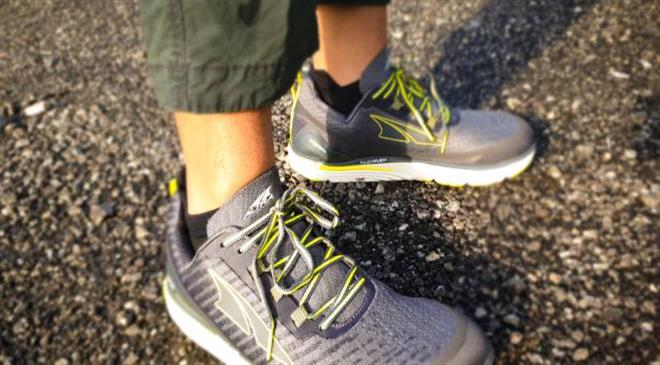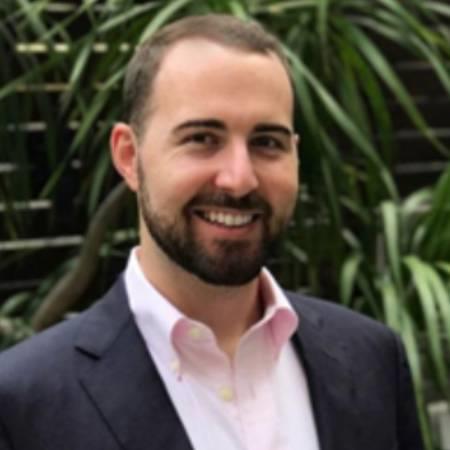By 2025, intend to have all cotton purchased by VF grown in US
Founded in 1899, VF Corporation is one of the world’s largest apparel, footwear and accessories companies. Some of its iconic outdoor, active and workwear brands include Vans, The North Face, Timberland and Dickies. Fibre2Fashion spoke to VF’s VP of Global Responsible Sourcing-- Peter Higgins, to understand VF’s key sustainability goals, and how it is implementing responsible sourcing by improving its supply chain.
How will you define VF’s legacy as? What is VF doing to keep its legacy intact through the years?
Our legacy, along with the collective spirit of our iconic brands, has been made by powering movements of sustainable and active lifestyles for the betterment of people and our planet. We believe there is a reciprocal relationship between purpose and profit.
In this year’s Made for Change Report, we talk in depth about how we have innovated across the specific areas of People, Planet, and Product, such as: inclusion, diversity, equity and action (IDEA); responsible sourcing practices; raw materials impact; circular business models for growth; regenerative supply chains for natural materials; and leveraging global influence to drive impact reduction across the industry.
Our traceability programme is the backbone of our responsible supply chain. Our traceability efforts help us make sure our sourcing is in line with our values and helps us make informed business decisions. One such example is from 2019 when VF identified potential environmental risks associated with sourcing leather in Brazil linked to deforestation in the Amazon Biome. Through our traceability programme, we verified our hides were not linked to deforestation, but we had lost confidence in the data and chose to stop sourcing from Brazil for our international products.
Today we have partnered with Terra Genesis International to build a regenerative natural leather supply chain, which aims to help mitigate the effects of climate change and improve soil quality. Through this new type of supply chain, we hope to expand this approach to cotton, wool, rubber, and sugarcane, while also sharing our experiences throughout the industry.
By 2025, we intend to have all cotton purchased by VF grown in the US, Australia or under a third-party cotton growing sustainability scheme, such as ZQRX, a regenerative wool platform. Through third-party verification, we are increasing transparency and aligning with emerging industry best practices.
Our circular design efforts and recommerce programmes help to make a more sustainable lifestyle more attainable for general consumers. In 2020 Timberland launched ReBOTL, a material made from discarded plastic bottles, and transformed it into rPET (recycled polyethylene terephthalate) yarns used in Timberland footwear. To date, the equivalent of over 380 million plastic bottles has been incorporated into Timberland footwear to date. The Circular Series, from our Napapirji brand, is a line of fully recyclable jackets. A first of its kind, the Circular Series is 100 per cent recyclable made with Econyl regenerated nylon and is Cradle to Cradle Certified Gold. The North Face brand’s Renewed programme enables consumers to purchase refurbished and repaired used The North Face clothing that is also backed by a one-year warranty.
What is VF doing to improve its supply chain?
Throughout our supply chain, we are using our scale, influence, and insight to help establish safe, stable working environments in the factories producing our products. We are also simultaneously striving to improve the lives of those in local communities beyond our factory walls.
We reiterated in our 2020 sustainability and responsibility report that VF aims to improve the lives of one million workers and their communities by 2025 and two million lives by 2030— working with our partner factories. Our “Worker and Community Development” (WCD) programme is essential to our success in achieving this goal. The programme has positively impacted nearly 550,000 people since inception through interventions in vulnerable communities. WCD programmes not only have positive impact on people and communities, but also have positive business benefits for our partner factories, including lower absenteeism, increased worker satisfaction, and improved line productivity. Our WCD programme exemplifies how purpose and business objectives can complement each other.
To ensure effective connectivity and accountability, the programme sits within our Supply Chain organisation and is led by our Responsible Sourcing division. Our approach is based on designing and delivering interventions that address salient needs in the factories and communities where we work, including everything from clean water to accessible vision care to commuter safety, vaccines and beyond. We partner with global and local expert organisations to maintain the highest standards for programme implementation, with a big focus on impact measurement. Our Measurement and Evaluation (MEL) framework is core to the WCD programme.
Our Purpose has two main tenants: bettering people and the planet. We continue to make strides to improve our supply chain’s environmental impact. Last year, as a result of VF’s partnership and funding, more than 35 of our supplier factories used renewable energy toward solar installations. We’re also working with GIZ, a German International development organisation, to introduce new renewable energy programmes at tier I and tier II factories in Bangladesh, Cambodia, China, Jordan, Korea, and Vietnam.
In one of our partner factories in Vietnam, QuangViet, with the support of VF’s sponsorship, they were able to install solar panels in 2020, where 90 per cent of the factory’s captured sunlight will be used for energy to help decrease carbon emissions. The project started under the Vietnam Improvement Program, in partnership with the International Finance Corporation (IFC). Because of this successful project, we are seeing a domino effect where Vietnam’s government is encouraging businesses to install solar panels and distribute excess energy to the grid.
How is collaboration with Sourcemap helping VF to further its supply chain mapping and transparency goals?
We have a robust traceability and transparency programme. Traceability is the backbone to building an ethical supply chain while transparency helps to build credibility with our stakeholders and trust with our consumers. In addition to understanding the origin of our materials, we develop and publish in-depth traceability maps that follow our brands’ products from raw material extraction, conversion and processing to material production and product assembly to our distribution centers (tier 1 through tier 4). This gives our consumers and other stakeholders an easily accessible, visual representation of a product’s entire journey. The maps are created using Sourcemap. In FY2019, we published our first 10 product maps. By the end of this calendar year, we will have 100 maps online.
That said, we can only address problems we can see, so we are extending our traceability efforts to dig deeper into our extended supply chain. As a part of this process, we have committed that by 2027, we will fully trace five of VF’s key materials from tier I to tier V. Expanding our traceability efforts will help inform VF’s continued collaborations with human rights experts, governments and international organisations to identify and improve salient human rights and environmental issues throughout our supply chain.

Fashion executives/brands are increasingly being urged to place sustainability at the core of their business models post Covid-19. How is VF keeping pace with responsible sourcing?
From our traceability maps, partnerships with factories abroad, and improving the lives of workers in our supply chain, VF placed sustainability and responsibility at the core of our business model long before the pandemic and we will continue to do so long after.
Our structure is one of the keys to our success. The ethos of our work is embedded at every level of the company, beginning with our executive leadership. Our chairman, president and chief executive officer, Executive Leadership Team (ELT), and board of directors are responsible for the oversight of VF’s sustainability and responsibility strategies and targets. And our sustainability and responsibility teams report directly into the executive leadership. As such, we are empowered to drive continuous improvement across VF and our network of suppliers,
We believe this year’s Made for Change Report is coming out at a crucial time in our industry, as climate change and a global pandemic are challenging humanity in unprecedented ways — from global economic crisis, catastrophic wildfires, dramatic temperature changes, and massive hurricanes to name just a few. Our Made for Change report represents what we can do when we put the betterment of people and the planet at the center of our business decisions.
Knowing where our raw materials originate helps us make better decisions, for our business and for the planet. That’s why VF takes a holistic approach when it comes to sourcing materials, helping to minimise negative environmental and social impacts. Our robust efforts to certify and trace materials help us understand the origins of our materials and how they were produced. To date, we have fully mapped our leather supply chain and we are extending efforts to trace five of VF’s key materials by 2027.
We understand that raw material extraction, processing and production account for the largest portion (nearly 50 per cent) of VF’s overall carbon emissions globally. Increasing our use of sustainable materials represents a significant opportunity to help lessen our environmental impact. We set our science-based targets in 2019 with goals to lessen Scope 1-3 emissions as we aspire to achieve net zero by 2050. We are making notable progress. We envision a future in which all materials used in our supply chain will be responsibly sourced renewable, recycled, or regenerative, and we are deeply invested in the innovations necessary to make this happen.
Currently, VF and our brands are supporting the development of regenerative supply chains for key materials used in our products. A regenerative approach aims to help promote biodiversity, enhance water cycles, improve soil health and sequester carbon. As defined by PUR Projet, these practices are intended to create net beneficial impacts on ecosystem services and provide beneficial economic and social impacts for farmers and local communities.
Still, we must keep in mind that each material is unique, and practices vary by crop, animal and region. To better understand the science, scale supply and source regenerative materials, VF brands are launching pilots globally focusing on implementing regenerative practices for certain materials. This includes our regenerative leather supply chain we built from the ground up, as well as pilot programmes across natural rubber, cotton, and sugar cane. VF’s Smartwool and icebreaker brands just this summer helped launch the first regenerative wool platform, ZQRX, in partnership with New Zealand Merino.

How has the COVID pandemic affected your production worldwide, and how have you responded?
Bettering people and the planet are core tenants of our Purpose. Even prior to the pandemic, we had a “people-first” approach to support workers and their families in our own operations and across our supply chain. We kept people at the heart of our decisions during the COVID-19 pandemic and we continue to do so as we navigate this new normal.
As noted in this year’s Made for Change report, the COVID-19 pandemic further highlighted the vital role workers play in supply chains. We also know that the pandemic had a disproportionate impact on vulnerable and marginalised communities globally. In the Spring of 2020, we worked with suppliers to understand their financial obligations and paid many early - many in a matter of days - to ensure liquidity so factories could make payroll amidst global disruption. VF also leveraged its banking relationships to implement supplier trade financing programmes to expedite payments for suppliers into the future.
While the pandemic posed obstacles for our worker-wellbeing programmes due to travel restrictions and factory closures, it also helped our suppliers see the value and importance of this work. Many of our programmes adapted and pivoted focus at the onset of the pandemic, including intensive training on personal hygiene, social distancing and supporting factories to implement adequate measures to prevent the spread of the virus in the workplace.
More recently, in Southeast Asia, we pivoted our partnership with WaterAid to get workers in partner factories and their communities throughout Cambodia vaccinated. International aid organisations played a major role in making that possible, responding to the Cambodian government’s call for help in distributing the Covid-19 vaccine. The structure of VF and WaterAid’s partnership was well-suited to be part of that response. As a result of this widespread and coordinated effort, more than 300,000 people were vaccinated relatively quickly.
Additionally, The VF Foundation, VF’s philanthropic gifting arm, and the VF family of brands donated more than $10 million in the early stages of the pandemic to assist with urgent medical needs and to individuals struggling during this unprecedented time. We also joined the International Labour Organisation (ILO), International Trade Union Confederation, and others in a united Call to Action to further support garment workers’ rights throughout the pandemic and beyond.
Can true transparency from seed to shelf be ever achieved?
Tracing the journey of our products and materials as they move through our complex supply chain is a monumental undertaking. We have 12 brands that manufacture more than 300 million units each year. Our supply chain spans more than 40 countries, so the logistics involved are complex to say the least. However, demystifying this process is foundational to maintaining a responsible supply chain and driving improvements for both people and the planet. We like to say at VF, that “Our traceability builds credibility while our transparency builds trust,” and as such, we strive to continuously enhance our transparency.
Our traceability programme upholds our commitment to transparency and provides us with assurance that our rigorous standards are met every step of the way. Our comprehensive mapping and supplier surveys help us understand the work we do, tracing production from farm to product finish. Though it is not an easy process, we are committed to striving to achieve full traceability.In addition, we have verified compliance with our policies on Animal Derived Materials, Forest Derived Materials, Conflict Minerals and Cotton Fibre Sourcing, and trade regulations to help us achieve transparency across our brands.



